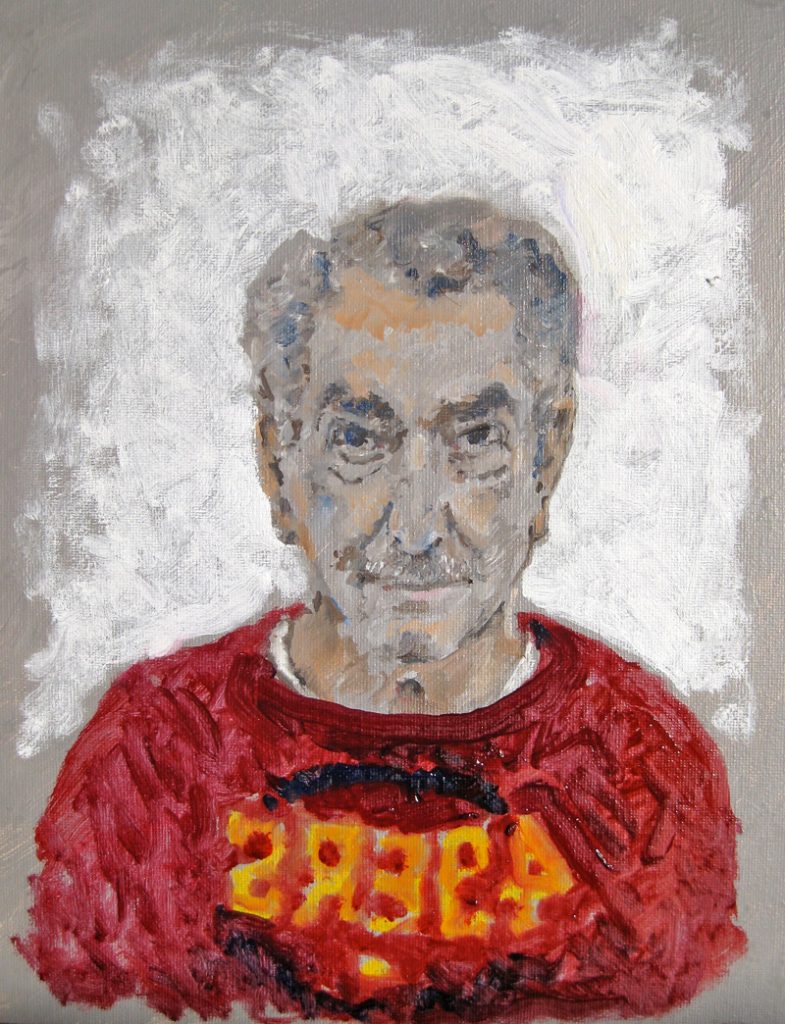LOCALS | THOMAS REYNOLDS
He’d lived in the flat on California Street near Steiner for 37 years. Suddenly late one afternoon Jim Scott realized something was wrong.
He called 911 and tried to answer all the dispatcher’s questions. Finally he told her: “Look, I have to get out of here. My room is full of black smoke.”
Sparks from a welder working next door had started a fire. The squadrons of firefighters soon on the scene flooded the blaze before it reached Scott’s apartment — but only after they had bashed in his ceiling and windows, leaving his home a soggy and sooty mess.
In his new book, The Al Tarik, Scott, now 93, gently unfolds the story of the three years that followed and landed him in a residential hotel on Sutter Street he describes as “a century-old San Francisco pile” that is “a refuge for those like myself who in their last years have been roughed up and tossed on the rocks and shoals.”
At first his landlord assured Scott he would be back in his apartment within a few months. He moved in temporarily with a neighbor across the alley. But as the renovation of the building languished, he needed another place to stay, and found no good options. So he moved back into his charred apartment.
“There was no heat or light, but the water was still running,” he writes. “It was much better than the Tenderloin cesspool I had fled. On my first night in what had been my old bedroom, I looked up through the blackened rafters to the shingles of the roof, which roared with a great downpour and thunder while lightning lit the plastic sheets stretched over the window spaces. Oddly, it all felt elemental and reassuring and that something positive could now happen.”
That unfailing sense of optimism runs throughout his sad story. A neighbor tipped city inspectors that Scott had returned to his damaged apartment. After a week, a caseworker arrived to say he had arranged five free nights at a hotel Scott calls the Al Tarik, but which an observant local might recognize as the Granada.
He would remain there for more than two years, paying for the privilege himself, plus the rent on a storage locker for his belongings. Yet he kept his attitude positive.
“The madness of the Al Tarik is proving restorative,” he writes. “In general, the people in our gang of around 250 are estimable in that, though coming from all strata of city life, having often grievous mental, emotional and physical problems — and in a lot of cases having been dust-binned by fate or relatives — they have tolerance, understanding and are often helpful to one another. There are exceptions — some shocking.”
He decided he would get through it by writing a book.
“That I liked the place immediately has a lot to do with our great array of noble discards — their look, their stories, interaction with one another and with the individualistic though understanding staff,” he writes. “Observing, conversing and recording are going to help me through a period of harried homelessness, poor health and my 88th year.”
Despite it all, he counted his blessings.
“Yes, it’s been more than a year since that July 30th event,” he writes. “A rough year with displacement, storing, relocation, leg and health problems, while listening to the sound of a bank account getting sucked down the drain.”
But: “The woeful truth is that this is all trivial compared to what others are enduring here on the Raft of the Medusa.”
At first he had a room of his own.
“It has been a foolish extravagance,” he writes, “although with its erratic heating, howling neighbor, reek from the laundry, bed bugs and cockroaches, it is far from posh.”
As the months passed, the need to conserve his meager resources made it necessary to take a roommate.
“I’ve made the transition from private to shared room status,” he writes, “and along with feelings of life spiraling downward, the room share has been a failure. The fates had fun listing then randomizing the parlous roommate possibilities offered by the hotel, a list that includes the ex-con, the addict, the thief, the woefully disabled and all manner of demented, then assigned me one I hadn’t thought of — the drunk.”
He adds: “Two old strangers living together in a small room is a grim idea, but I don’t have a choice, and the savings are big and necessary. It will slow the drain on funds, postpone the auctioning of my belongings and delay the chances of life on the street.”
Through it all, he continued a two-decade tradition of creating a self-portrait on Thanksgiving. Art supplies were limited, so he worked in pencil.
“In doing my annual Thanksgiving self-portrait, I’m saying I’m glad to be in fair health and in at least better shape than some of the other guests,” he writes. “Though facing 90, I’m able to be of some help to my shipmates. Also, as a project, I have been doing pencil portraits of the guests, giving the models the originals after getting copies in the office.”
Construction on his flat on California Street dragged on into a third year. But he was determined to stick it out and get back home, with no encouragement from his landlord.
“Trying to get the keys for the move-in, there was an ugly scene with the landlord, who is deeply resentful of my paying way under market value for the place, as well as having sued him,” he writes. “He offered to buy me out. It may be senile bravado, but I’m moving in.”
And he did. This year on Thanksgiving he painted his self-portrait at home.
Jim Scott’s newest book, The Al Tarik, and his earlier book, Art Student, are both available at blurb.com.








